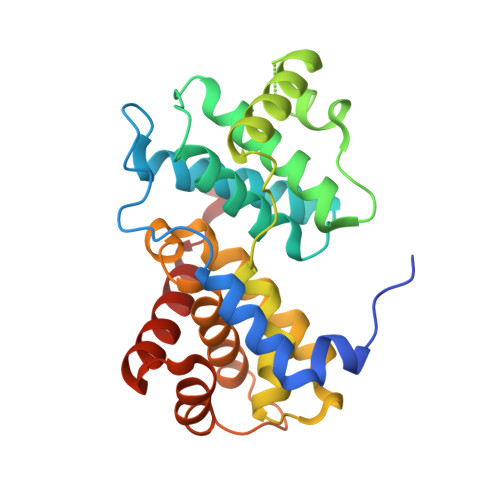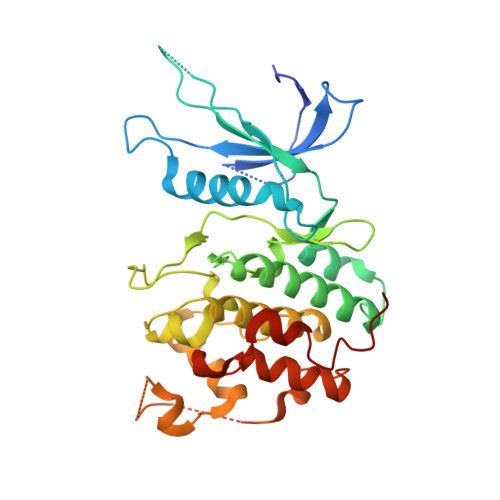Toward understanding the structural basis of cyclin-dependent kinase 6 specific inhibition.
Lu, H., Schulze-Gahmen, U.(2006) J Med Chem 49: 3826-3831
- PubMed: 16789739
- DOI: https://doi.org/10.1021/jm0600388
- Primary Citation of Related Structures:
2EUF, 2F2C - PubMed Abstract:
Cyclin-dependent kinases (CDKs) are key players in cell cycle control, and genetic alterations of CDKs and their regulators have been linked to a variety of cancers. Hence, CDKs are obvious targets for therapeutic intervention in various proliferative diseases, including cancer. To date, drug design efforts have mostly focused on CDK2 because methods for crystallization of its inhibitor complexes have been well established. CDK4 and CDK6, however, may be at least as important as enzymes for cell cycle regulation and could provide alternative treatment options. We describe here two complex structures of human CDK6 with a very specific kinase inhibitor, PD0332991, which is based on a pyrido[2,3-d]pyrimidin-7-one scaffold, and with the less specific aminopurvalanol inhibitor. Analysis of the structures suggests that relatively small conformational differences between CDK2 and CDK6 in the hinge region are contributing to the inhibitor specificity by inducing changes in the inhibitor orientation that lead to sterical clashes in CDK2 but not CDK6. These complex structures provide valuable insights for the future development of CDK-specific inhibitors.
- Physical Biosciences Division at Lawrence Berkeley National Laboratory, 1 Cyclotron Road, MS3, Berkeley, California, USA.
Organizational Affiliation:




















